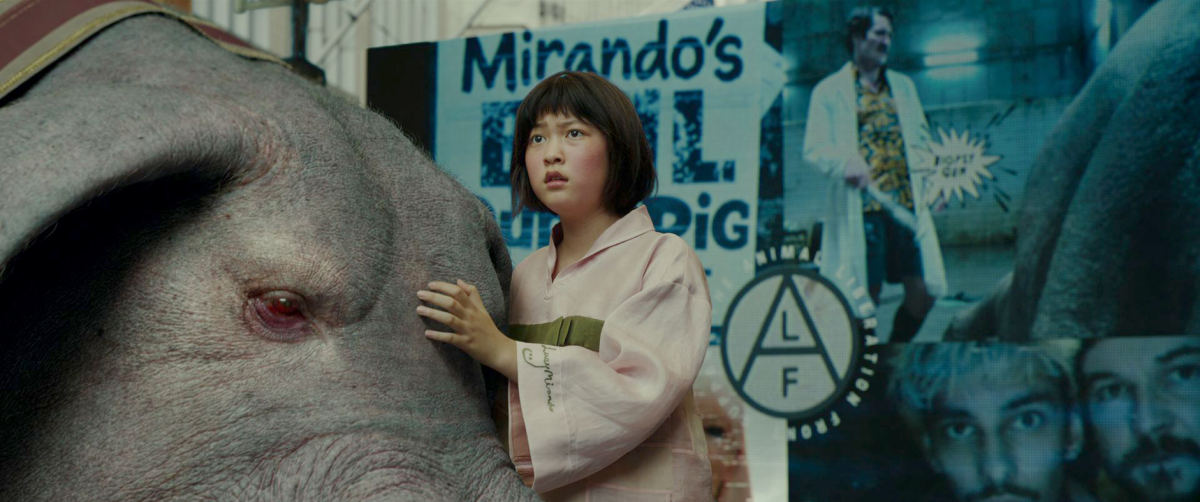10 of the Best Indie Sci-Fi Movies

Audiences looking for more subtle character development than special effects sequences, or more artfulness in their entertainment, can find some of the best indie sci-fi on their favorite streaming services. Listed in reverse chronological order of their release dates because each one is too good in its own right to rank against the others, here are 10 of the best indie sci-fi movies.
After Yang (2022)

Based on the short story “Saying Goodbye to Yang” by Alexander Weinstein, After Yang was written, directed, and edited by the South Korean-born American filmmaker Kogonada. At a glance, it might seem to share motifs with Bicentennial Man, A.I. Artificial Intelligence, or even Ex Machina, but After Yang is more reminiscent of literary science fiction, like Plum Rains by Andromeda Romano-Lax or Klara and the Sun by Kazuo Ishiguro, than other cinematic sources.
In the near future, Kyra (Jodie Turner-Smith) and Jake (an understated Colin Farrell) adopt their daughter Mika (Malea Emma Tjandrawidjaja) from China. As a way to help Mika connect with her cultural heritage, Kyra and Jake purchase a technosapien named Yang who was designed to appear Chinese and whose memory bank is full of knowledge about Chinese culture, but when Yang experiences a technical failure, his lifespan is cut short.
Along his contemplative yet desperate journey to repair Yang, Jake learns about who Yang was by reverse engineering his existence. Jake’s glimpses into Yang’s inner life mirror the human experience of grief and hint at what it means to cultivate an identity under the quiet scrutiny of ambient surveillance. Meticulous lighting design and subtle camerawork infused by a hauntingly beautiful soundtrack by Aska Matsumiya give the film a dreamlike quality.
After Yang examines its metaphysical themes with mesmerizing elegance. After its premiere at Cannes Film Festival in 2021, it was released by A24 in 2022 to stream exclusively on Showtime. Emotionally intelligent and stunningly resonant, it is the first essential sci-fi viewing of the decade.
See You Yesterday (2019)

Directed by Stefon Bristol from a screenplay co-written with Fredrica Bailey, and produced by Spike Lee exclusively for Netflix, See You Yesterday speaks directly to the need for Black and Brown leads in sci-fi cinema. But this is not Afrofuturism. It takes place entirely within the Flatbush neighborhood of Brooklyn, in the present.
Two Black teen STEM prodigies—C.J. (Eden Duncan-Smith) and her BFF Sebastian (Danté Crichlow)—develop a technology to make time travel possible. When the NYPD murders a loved one, the two are launched into a series of increasingly dangerous trips to the not-too-distant past. Runs to the bodega, invitations to backyard barbecues, and temporal paradoxes on school nights come together to ground this story in contemporary American reality. The science-fiction elements allow for poignant metaphors, particularly about the ways Black youth are viewed with suspicion by other cultures, regardless of their excellence.
The special effects in the time-jumping scenes might look a little like something from Nickelodeon, but despite a visibly low budget, See You Yesterday has its mind on big themes: generational trauma, institutional racism, and of course, the space-time continuum.
Earnest and open-ended, this film has more heart than some features with 10 times the budget. A cameo by Michael J. Fox as the duo’s science teacher is made all the more special by the fact that it was his last role before he retired from acting the following year.
I Am Mother (2019)

An Australian film about a girl named Daughter (Clara Rugaard) being raised in a hermetically sealed bunker by Mother (full-body suit performance by Luke Hawker, voice of Rose Byrne), a robot designed to facilitate the repopulation of Earth after an apocalyptic event. Daughter was gestated from a frozen embryo and born in the bunker. Her only contact has been with her ever-present Mother, but their relationship takes a turn thanks to the appearance of a human survivor played by Hillary Swank.
Mother can been seen as a mechanical embodiment of the institutions that oppress women in the name of modesty or safety. It can also be interpreted as an overly controlling parent who shelters their children in an excessive attempt to protect them from harm. Either way, the story is ultimately both humanist and feminist as it challenges preconceived ideas about security, comfort, and autonomy.
I Am Mother never looks or sounds like a low-budget film, although compared to its apparent influences James Cameron and Ridley Scott, the overall design is definitely minimal. The minimalism-by-necessity works well within the storyspace and viewers will never be distracted by the small scale of this production.
Prospect (2018)

Sometimes, a self-contained science fiction film so thoroughly immerses viewers in its world that its short runtime belies the impact of the viewing experience. Prospect is that kind of film. As narratively economical as the most engrossing novellas and as visually inventive as the weirdest science fiction comics, this is a story of a teenage girl and her father venturing into a poisonous forest on a wild moon to hunt gems.
The world-building is effortless and serves as a reminder of how much visual appeal can be crafted on a low budget. The costume design by Aidan Vitti includes believable breathing apparatus and safety gear, and the ramshackle look of everything suggests that each character came from a different world.
Written and directed by Zeek Earl and Chris Caldwell, Prospect is abundant in visual and narrative detail without ever sacrificing its intrepid pace. This is a character-driven story with bursts of action that reimagines Western themes like prospecting and pioneering. Performances by Sophie Thatcher (Yellowjackets, The Book of Boba Fett) and Pedro Pascal (whose delivery recalls his performance as Din Djarin in The Mandalorian in more than one scene) are especially compelling.
The whole storyspace is full of unexpected details, like the prospector Inumon’s (Sheila Vand) inventive way of disorienting assailants. The xeno-biological source of the gems recalls something from a David Cronenberg film, and enhances the tension around collecting them. Surprises like these—as well as the moral ambiguity and emotional engagement of characters who are only trying to survive in a hostile galaxy—elevate this film to surprising heights.
After its premier at the 2018 South by Southwest Film Festival, Prospect was released in Regal Cinemas and is now available for streaming on multiple platforms.
Fast Color (2018)

A science fiction coming-of-age story reminiscent of X-Men or Jumper, Fast Color is a film about stepping into your power, even when you might not entirely understand it. Gugu Mbatha-Raw plays Ruth, a wanderer who experiences seizures that can trigger earthquakes. Ruth is being tracked by federal agents who want to study her—and predictably, control her—but she wants to learn to understand herself on her own terms.
Lorraine Toussaint plays Ruth’s mother Bo, whose Toni Morrison-informed delivery makes her performance one of the most memorable. Bo is a source of love, support, and wisdom for Ruth, and helps Ruth reconcile with her unique gifts. Whether her powers are supernatural or extraterrestrial is a question left unanswered, but this is a story with more on its mind than a superhero origin.
In one scene, Ruth puts a song on a jukebox at a dive bar. It’s “Germfree Adolescents” by the 1970s punk band X-Ray Spex, led by the trailblazing biracial Black woman Poly Styrene. In this otherwise quiet moment, the soundtrack supports the throughline of the narrative: Like Poly Styrene and other gifted Black women who came before her, Ruth exists at intersections and on margins, yet the extent of her power is immeasurable.
Okja (옥자) (2017)

Produced in part by Brad Pitt’s Plan B Entertainment with a budget of $50 million, Okja might push the boundary of what the word “indie” means, but the average Hollywood budget is actually twice that amount. Since its premiere at the 2017 Cannes Film Festival and its limited theatrical release in South Korea, Okja has only been available for streaming on Netflix, which is where audiences can experience the majesty and mayhem of this movie.
South Korean filmmaker Bong Joon-ho (Snowpiercer, Parasite) directed this bilingual English-Korean adventure that takes us from a weathered farm in the mountains, to a subterranean shopping center in Seoul, to pristine corporate office spaces in New York, to a slaughterhouse straight out of a PETA exposé. Unmistakable themes like the challenges of globalization, the ecological effects of agribusiness, and the sacredness of translation are balanced with more subtle ideas around agency, consent, and compassion.
The performances are as varied and distinct as the themes. Tilda Swinton, Paul Dano, and Steven Yeun are each captivating in their own way, while Jake Gyllenhaal borders on absurdism. Choi Woo-shik serves a memorable cameo as a distractingly attractive truck driver. And star Ahn Seo-hyun radiates a full spectrum of gentleness, ferocity, and self-determination.
The CGI is seamless, especially in closeups of Okja. Because this is more than a special effects-driven story, though, digital matte paintings and post-production flourishes never overcrowd their scenes. Wild, tender, and highly re-watchable, Okja is a modern indie sci-fi classic.
Advantageous (2015)

A rare American film written by women, directed by a woman, and produced by and mostly starring women, most of whom are Asian American, Advantageous is a hidden gem. Originally developed as a 23-minute short by director Jennifer Phang and her co-writer Jacqueline Kim, Advantageous premiered at Sundance in 2015. It was soon selected for exclusive distribution by Netflix, and is now available on multiple platforms.
Co-writer Kim plays Gwen Koh, a divorced mother in a near-future city whose resources run dry when she becomes obsolete as an employee because of her age. Her only viable option for employment is as an egg donor in this increasingly infertile world—until her previous employer offers her the opportunity to be one of the first subjects in a procedure that will transfer her consciousness into a new body. Enter Freya Adams as Gwen 2.0, who is disoriented and unrecognizable to her own family.
Subdued lighting design and elegant cinematography enhance the quiet tension of this story. Every performance conveys the melancholy of surviving as a woman in an increasingly objectified and commodified society. Emotionally intelligent and highly refined despite its low budget, Advantageous examines ageism, body dysmorphia, and familial love in the face of rapidly advancing medical technology.
Under the Skin (2014)

Directed by Jonathan Glazer and written by Glazer and Walter Campbell, based on a novel by Michel Faber, Under the Skin offers an unnervingly alien perspective of the human world.
Reminiscent of the novel The Man Who Fell to Earth (and both of its adaptations), yet more deliberate in its pace, Under the Skin examines the experience of being a healthy and attractive young woman on Earth. There are several suggestions that Scarlett Johansson’s nameless character would be treated differently if presenting as a man or as a less aesthetically pleasing person. Misogyny is ultimately more menacing to her than any other element of her environment.
This is one of Johansson’s most nuanced roles, and she performs entirely through her eyespace, barely vocalizing the entire film. Most of the other performers had no previous acting experience, and their naturalistic, occasionally awkward delivery gives the film an almost documentary quality in some scenes.
Cerebral and startling, accompanied by an unsettlingly hypnotic score by Mica Levi (which was named the second-best film score of all time by Pitchfork), the story unravels in a pure cinema kind of way. Johansson’s journey at times suggests a trans experience, as passability and desirability are increasingly matters of life and death for her character.
Although Under the Skin was a complete box-office failure, it is a high artistic achievement and an absolute must-see. And attentive viewers will notice that one of the most iconic visual designs in Stranger Things is a direct homage to this film.
A Scanner Darkly (2006)

The only film to date that features Keanu Reeves, Robert Downey Jr., Woody Harrelson, and Winona Ryder in its ensemble, this adaptation of a novel by Philip K. Dick has no equivalent.
The opening title card sets the time of the story as “seven years from now.” Substance D is a euphoric hallucinogenic drug that causes almost instantaneous dependence, and about 20% of the population is addicted. Reeves plays Bob Arctor (alias Fred), an undercover agent in the fight against the drug, who has himself become addicted. He and his friends chill, get high, banter (Downey Jr. and Harrelson rock these scenes), and eventually turn against each other as they try to maintain their own neurological and emotional stability.
Director Richard Linklater (Boyhood) perfects the digital rotoscope animation technique he first used in his film Waking Life. Every frame (24 of them per second) of Shane F. Kelly’s cinematography and Sandra Adair’s editing was traced over with a distinct color design that reflects the earthiness of the environment, and the otherworldliness of hallucinogenic drugs.
The “scramble suit” Arctor wears to literally scramble his voice and appearance in real-time has a mesmerizing effect on the viewer as it moves through a constantly-changing range of facial features and skin tones. Frenetic performances and a distinctive visual style come together in a corrosive commentary on the violence of the War on Drugs, the stigma of addiction, and the nebulous nature of social identities.
Its $7 million box office receipts were about $1 million shy of its $8 million budget, but its artistic value and critical success are enduring. A Scanner Darkly remains one of the best indie sci-fi movies of all time.
THX 1138 (1971)

One of the earliest examples of an indie sci-fi movie, THX 1138, was the first feature written and directed by none other than Star Wars creator George Lucas. Although distributed by Warner Bros., it was the creative product of American Zoetrope, the San Francisco-based filmmaking collective founded and financed by Francis Ford Coppola to attract inexperienced film technicians and support their career development.
The story is set in an indeterminate future, with citizens in a subterranean city each named a series of letters and numbers—which is where the film gets its name—and kept under tight control. Robert Duvall plays THX 1138, who goes off his mandated meds and struggles to find a way out of the underground labyrinth populated only by indentured laborers, police androids, and monks.
Lucas’s use of stylized photographic techniques and meticulous set design create an aura that is both dreamlike and disorienting. This is a mood-driven piece that uses special effects sparingly, relying instead on measured performances by Duvall, Maggie McOmie, and Donald Pleasence, accompanied by subtle sound design.
The dystopian narrative evokes oppressive feelings, but the film’s cultural reach is expansive. Six years before Star Wars, Lucas set his visual standard for Imperial uniforms and Death Star interiors. He references THX 1138 in every episode of the Original and Prequel Trilogies, as well as in three of the Indiana Jones films. The title is also the namesake of THX, the high fidelity audio/visual reproduction standards still present in movie theaters, gaming consoles, and car audio systems. An iconic sequence in a white space with no walls foretells something from The Matrix, and themes of individuality and personal agency also predate films like Parts: The Clonus Horror, Logan’s Run, and The Island.
The original theatrical version of THX 1138 was never released in home video format, but Lucas released a digitally enhanced director’s cut on DVD in 2004.
(featured image: Film4 Productions)
Have a tip we should know? [email protected]
